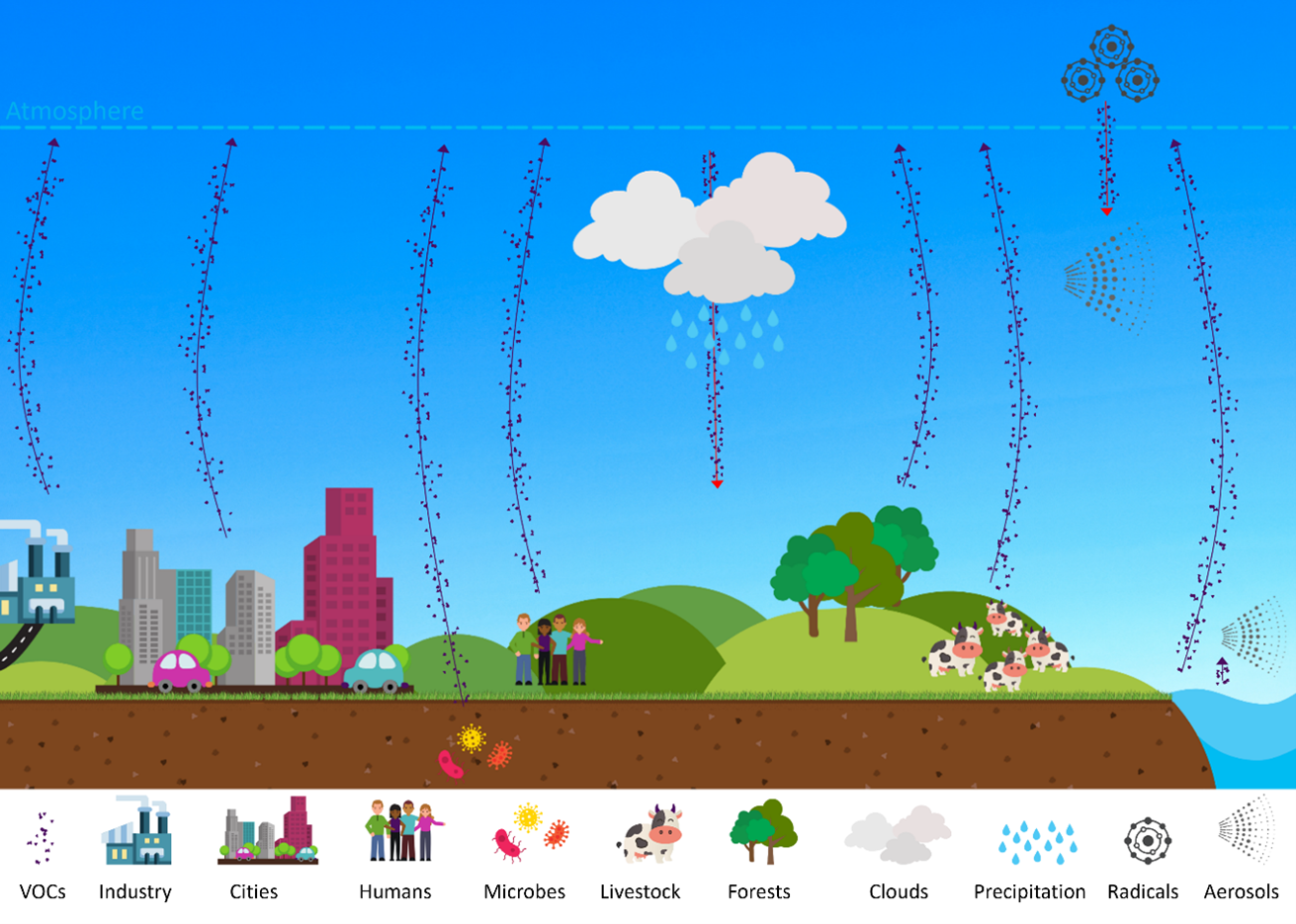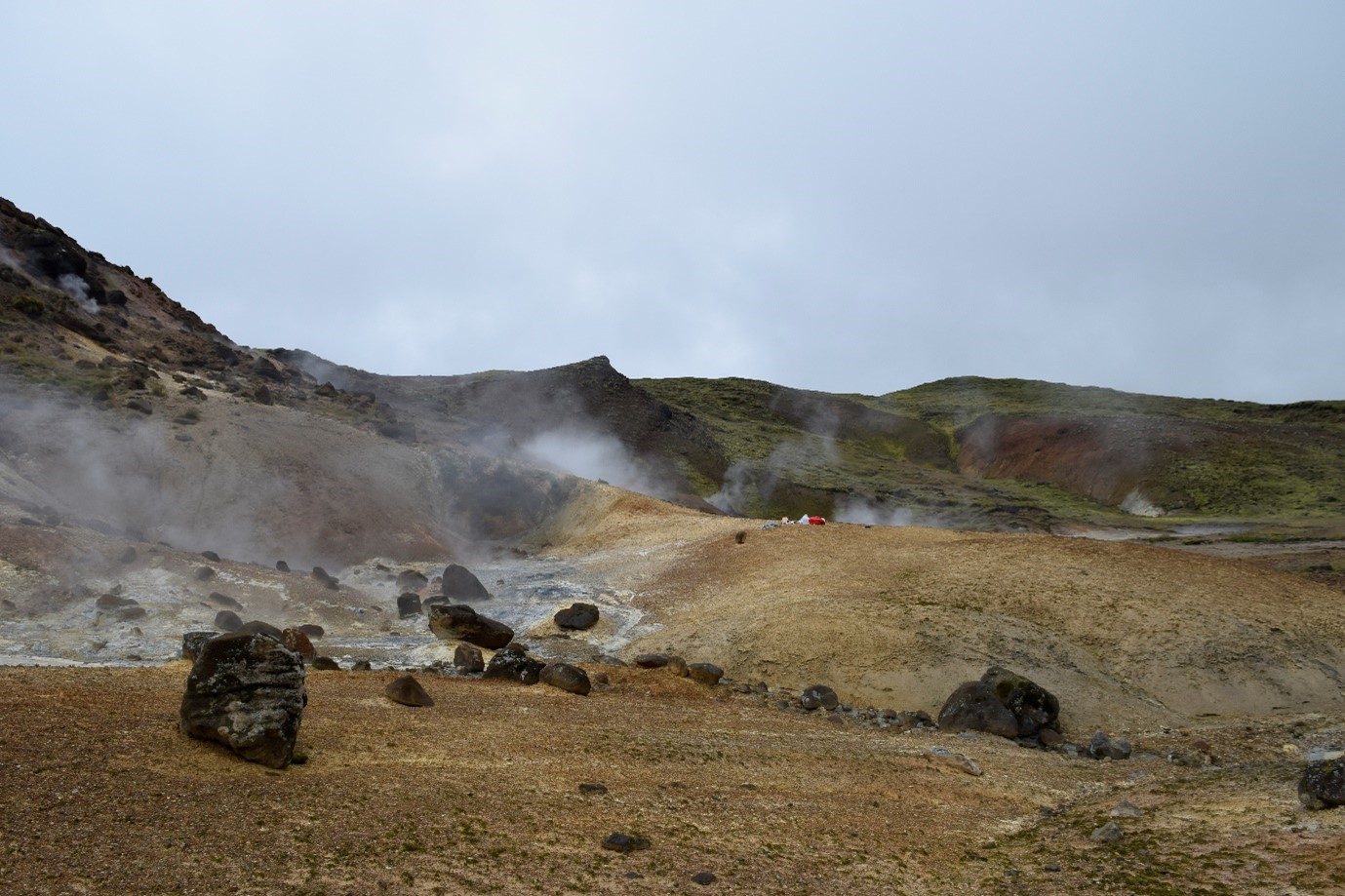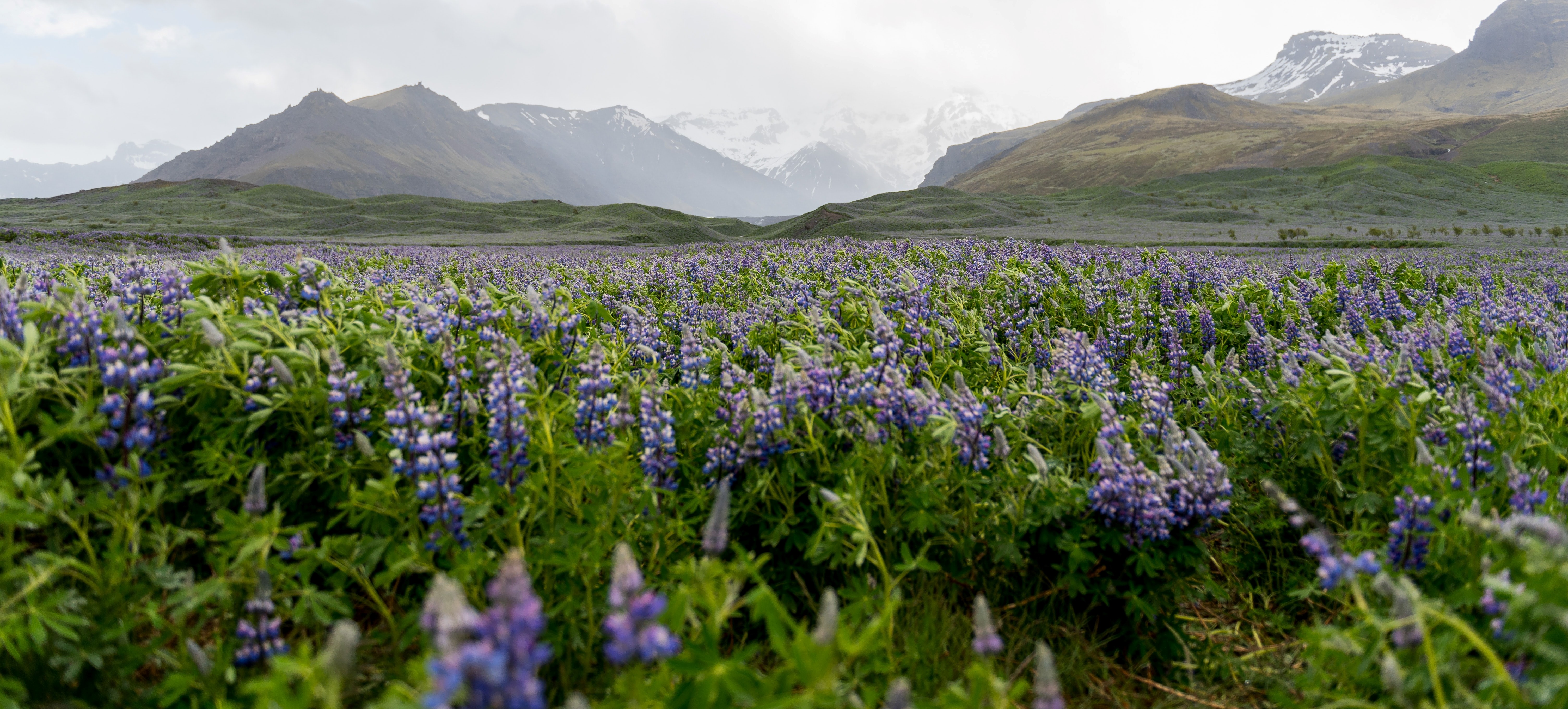Sniffing
out odours can lead to vast and infinite possibilities! In Ancient Greece,
around 400BCE, Hippocrates used ‘the art of smell’ to diagnose disease. Today, dogs are
being trained to smell for cancer and at least one person can smell
Parkinson’s disease. The plant kingdom is also rich in odours that plants
use to attract or deter insects.
 Figure 1: Lavender and poppy flowers (Pixnio CC-O)
Figure 1: Lavender and poppy flowers (Pixnio CC-O)
Why are VOCs important?
Scientists refer to these odours as ‘Volatile Organic Compounds’ or VOCs. ‘Volatile’ means they exist as a gas in the atmosphere at ambient (room) temperature, and ‘organic’ means the compounds contain carbon. As temperatures change, different volatiles become more prominent; think about the difference between the smell of rising dough and the smell of baking bread coming from a hot oven!
Smells or odours aren’t always detectable by the human nose but they are present in much of the Earth and its atmosphere, forests, oceans and cities (Figure 2). VOCs can be produced by industrial processes and from all life found on Earth (for example humans, livestock, microbes) through their metabolic processes. The VOCs cycle around Earth’s ecosystems and are lost, gained, used and released through myriad natural processes.VOCs are vital to the world’s carbon budget. They can support chemical reactions with highly reactive chemicals, known as radicals. As shown in Figure 2, by combining with radicals, VOCs form aerosols, which can affect local and regional air quality, influence other atmospheric compounds and affect the Earth’s energy balance, forcing changes to its climate.
VOCs clearly have an intimate relationship with Earth and its life. If we can develop ways to identify VOCs and where they might have come from, we can apply this knowledge to similar environments elsewhere, perhaps even to other planetary bodies where life might have existed in the past. The presence or distribution of VOCs may be a biosignature, that is, a sign of life or metabolic processes.
 Figure 2: Sources and interactions of natural and human-made Volatile Organic Compounds. Copyright: Claire Batty & Hannah Cooper, AstrobiologyOU
Figure 2: Sources and interactions of natural and human-made Volatile Organic Compounds. Copyright: Claire Batty & Hannah Cooper, AstrobiologyOUHow do we do research on VOCs?
First, we must first capture the VOCs. They are found either in the air or produced by a solid or liquid. Air samples are easy to collect; we simply use a pump to collect them either into a bag or on to special materials (called sorbents) that hold on to the VOCs until they can be analysed. Solid or liquid samples are sealed into special bags and the VOCs they release are collected in the bag.
Once the VOCs are collected, they are detected using a piece of specialised, highly-sensitive analytical equipment, called a mass spectrometer, which filters and separates them so we can identify individual compounds.
Using this method, we can detect tiny amounts of VOCs without destroying the delicate environments they come from. Such a non-invasive method is especially important when looking for VOCs in extra-terrestrial environments, as it removes the need for digging, or other destructive or intrusive procedures. A mission to another planetary body costs a great deal of money but it would cost more than money if we destroyed or changed a natural ecosystem.
 Figure 3: Sampling VOCs from hydrothermal vents – a recent Open University field trip to Iceland under a Europlanet grant. Copyright: Claire Batty
Figure 3: Sampling VOCs from hydrothermal vents – a recent Open University field trip to Iceland under a Europlanet grant. Copyright: Claire BattyResearching VOCs at AstrobiologyOU
In AstrobiologyOU, we are studying VOCs in ‘analogue environments’. An analogue environment is a location or situation that resembles the geological or biological conditions of another planetary body. Some analogues are laboratory simulations, while some are actual environments on Earth, such as Svalbard in Norway (very cold) or the Atacama Desert in Chile (very dry). In these environments, we can collect and analyse VOC samples from the air, from local sediments and from microbial biofilms and cultures that we can then analyse in the laboratories. This records a baseline of data for the specific environment or the specific microbe. If we ever do get VOC data from actual space missions, we can make a robust comparison against the data on our baseline. We also want to be sure that any potential evidence of life we detect on the new world comes from that world and not our own.
But before we even think about detecting VOCs from other planetary bodies, we must be mindful that anything we – or our spacecraft – carry from our own planet would be ‘contamination’ to the new world. This means that the preparations for any mission destined for space includes a huge amount of effort to ensure that we remove (or at least identify) as much biological or chemical contamination as we can.
Mission hardware might not only be contaminated by microbial life that could be transported to another planet and emit VOCs (biological contamination) but the materials the hardware is made from can also emit VOCs (chemical contamination). These emissions can be increased by the vacuum and heat of space. If those emissions settle on sensitive equipment, they could cause problems. On Earth we could send out an engineer… but it’s not so easy to do that in space!
Our main mission must be to ‘go forth and study’ not ‘go forth and damage’. Whether it is contaminating a planet with our own bacteria, contaminating samples we want to analyse in space or bringing something back from another planet that could be harmful to Earth, we must take responsibility for our actions.
At The Open University we are developing and using methods for both preventing contamination, by sniffing out contaminating VOCs that may be present in the processes of making flight hardware, and protecting against contamination by designing ways to collect and analyse VOCs coming from samples analysed in space or returned to Earth from other planets.
We hope that our research on VOCs will help us to ‘sniff out’ the existence of planetary environments outside the Earth and determine the patterns of VOCs that indicate signs of life or the potential to support life.It's all 'smellementary' really!
 This article is part of the Astrobiology Collection on OpenLearn. This collection of free articles, interactives, videos and courses provides insights into research that investigates the possibilities of life beyond the Earth and the ethical and governance implications of this.
This article is part of the Astrobiology Collection on OpenLearn. This collection of free articles, interactives, videos and courses provides insights into research that investigates the possibilities of life beyond the Earth and the ethical and governance implications of this.




Rate and Review
Rate this article
Review this article
Log into OpenLearn to leave reviews and join in the conversation.
Article reviews